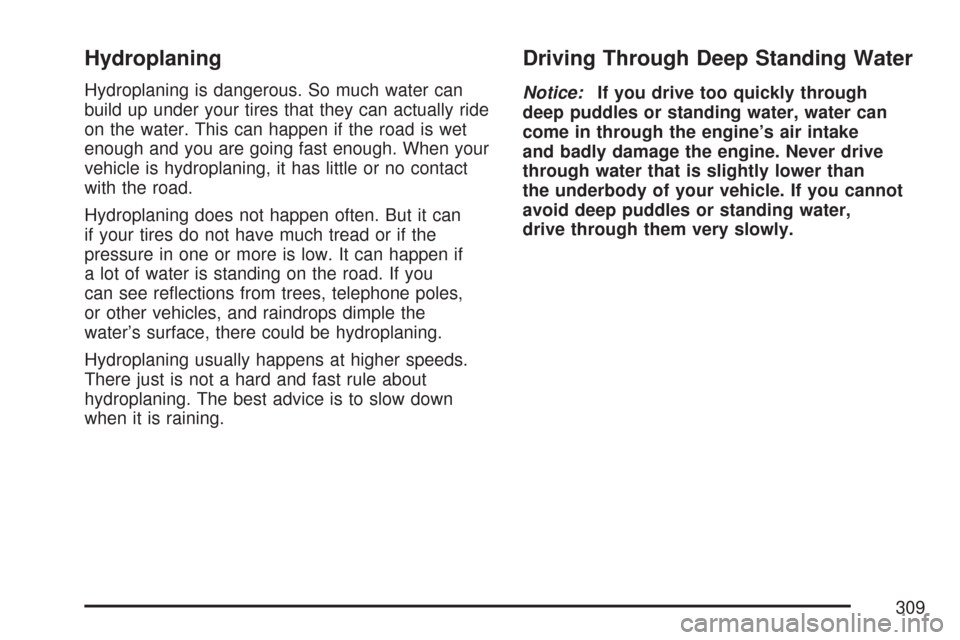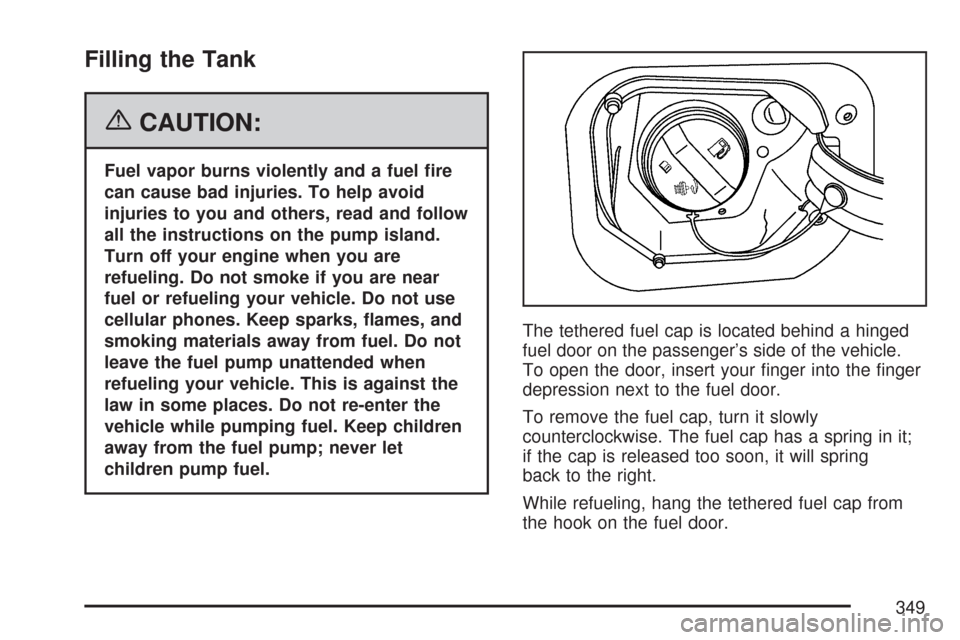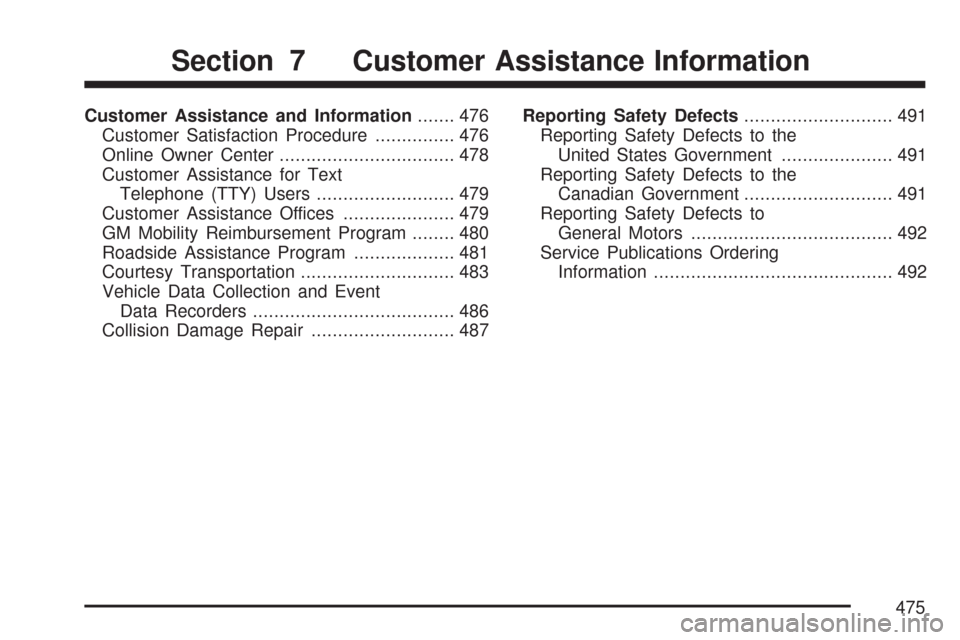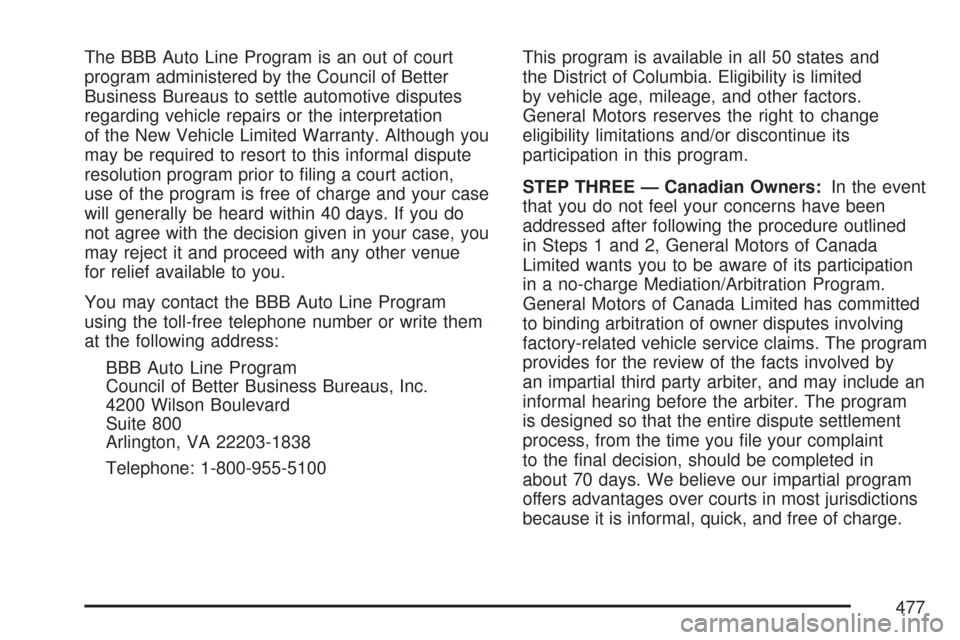Page 284 of 510

Radio Reception
Frequency interference and static during normal
radio reception can occur if items such as
cellphone chargers, vehicle convenience
accessories, and external electronic devices
are plugged into the accessory power outlet.
If there is interference or static, unplug the
item from the accessory power outlet.
AM
The range for most AM stations is greater than
for FM, especially at night. The longer range
can cause station frequencies to interfere with
each other. For better radio reception, most
AM radio stations boost the power levels during
the day, and then reduce these levels during
the night. Static can also occur when things
like storms and power lines interfere with radio
reception. When this happens, try reducing
the treble on your radio.
FM Stereo
FM stereo gives the best sound, but FM signals
reach about 10 to 40 miles (16 to 65 km). Tall
buildings or hills can interfere with FM signals,
causing the sound to fade in and out.
XM™ Satellite Radio Service
XM™ Satellite Radio Service gives digital radio
reception from coast-to-coast in the 48 contiguous
United States, and in Canada. Just as with FM,
tall buildings or hills can interfere with satellite
radio signals, causing the sound to fade in and out.
In addition, traveling or standing under heavy
foliage, bridges, garages, or tunnels can cause
loss of the XM™ signal for a period of time.
The radio could display NO XM SIGNAL to
indicate interference.
284
Page 286 of 510

Backglass Antenna (Sedan Only)
The AM-FM antenna is integrated with the
rear window defogger, located in the rear window.
Make sure that the inside surface of the rear
window is not scratched and that the grid lines on
the glass are not damaged. If the inside surface
is damaged, it could interfere with radio reception.
Notice:Using a razor blade or sharp object
to clear the inside rear window may damage
the rear window antenna and/or the rear
window defogger. Repairs would not be
covered by your warranty. Do not clear the
inside rear window with sharp objects.
Notice:Do not apply aftermarket glass tinting
with metallic �lm. The metallic �lm in some
tinting materials will interfere with or distort
the incoming radio reception. Any damage
caused to your backglass antenna due to
metallic tinting materials will not be covered
by your warranty.
Because this antenna is built into the rear window,
there is a reduced risk of damage caused by
car washes and vandals.If adding a cellular telephone to your vehicle,
and the antenna needs to be attached to the
glass, make sure that the grid lines for the
AM-FM antenna are not damaged. There is
enough space between the grid lines to attach
a cellular telephone antenna without interfering
with radio reception.
XM™ Satellite Radio Antenna
System
The XM™ Satellite Radio antenna is located on
the roof of your vehicle. Keep this antenna clear
of snow and ice build up for clear radio reception.
A vehicle with a sunroof might not get the best
performance from the XM™ system if the sunroof
is open.
Loading items onto the roof of your vehicle can
interfere with the performance of the XM™ system.
Make sure the XM™ Satellite Radio antenna is
not obstructed.
286
Page 309 of 510

Hydroplaning
Hydroplaning is dangerous. So much water can
build up under your tires that they can actually ride
on the water. This can happen if the road is wet
enough and you are going fast enough. When your
vehicle is hydroplaning, it has little or no contact
with the road.
Hydroplaning does not happen often. But it can
if your tires do not have much tread or if the
pressure in one or more is low. It can happen if
a lot of water is standing on the road. If you
can see re�ections from trees, telephone poles,
or other vehicles, and raindrops dimple the
water’s surface, there could be hydroplaning.
Hydroplaning usually happens at higher speeds.
There just is not a hard and fast rule about
hydroplaning. The best advice is to slow down
when it is raining.
Driving Through Deep Standing Water
Notice:If you drive too quickly through
deep puddles or standing water, water can
come in through the engine’s air intake
and badly damage the engine. Never drive
through water that is slightly lower than
the underbody of your vehicle. If you cannot
avoid deep puddles or standing water,
drive through them very slowly.
309
Page 349 of 510

Filling the Tank
{CAUTION:
Fuel vapor burns violently and a fuel �re
can cause bad injuries. To help avoid
injuries to you and others, read and follow
all the instructions on the pump island.
Turn off your engine when you are
refueling. Do not smoke if you are near
fuel or refueling your vehicle. Do not use
cellular phones. Keep sparks, �ames, and
smoking materials away from fuel. Do not
leave the fuel pump unattended when
refueling your vehicle. This is against the
law in some places. Do not re-enter the
vehicle while pumping fuel. Keep children
away from the fuel pump; never let
children pump fuel.The tethered fuel cap is located behind a hinged
fuel door on the passenger’s side of the vehicle.
To open the door, insert your �nger into the �nger
depression next to the fuel door.
To remove the fuel cap, turn it slowly
counterclockwise. The fuel cap has a spring in it;
if the cap is released too soon, it will spring
back to the right.
While refueling, hang the tethered fuel cap from
the hook on the fuel door.
349
Page 351 of 510
Filling a Portable Fuel Container
{CAUTION:
Never �ll a portable fuel container while it
is in your vehicle. Static electricity
discharge from the container can ignite
the gasoline vapor. You can be badly
burned and your vehicle damaged if this
occurs. To help avoid injury to you and
others:
Dispense gasoline only into approved
containers.
Do not �ll a container while it is inside
a vehicle, in a vehicle’s trunk, pickup
bed, or on any surface other than the
ground.
CAUTION: (Continued)
CAUTION: (Continued)
Bring the �ll nozzle in contact with the
inside of the �ll opening before
operating the nozzle. Contact should
be maintained until the �lling is
complete.
Do not smoke while pumping
gasoline.
Do not use a cellular phone while
pumping gasoline.
351
Page 475 of 510

Customer Assistance and Information....... 476
Customer Satisfaction Procedure............... 476
Online Owner Center................................. 478
Customer Assistance for Text
Telephone (TTY) Users.......................... 479
Customer Assistance Offices..................... 479
GM Mobility Reimbursement Program........ 480
Roadside Assistance Program................... 481
Courtesy Transportation............................. 483
Vehicle Data Collection and Event
Data Recorders...................................... 486
Collision Damage Repair........................... 487Reporting Safety Defects............................ 491
Reporting Safety Defects to the
United States Government..................... 491
Reporting Safety Defects to the
Canadian Government............................ 491
Reporting Safety Defects to
General Motors...................................... 492
Service Publications Ordering
Information............................................. 492
Section 7 Customer Assistance Information
475
Page 477 of 510

The BBB Auto Line Program is an out of court
program administered by the Council of Better
Business Bureaus to settle automotive disputes
regarding vehicle repairs or the interpretation
of the New Vehicle Limited Warranty. Although you
may be required to resort to this informal dispute
resolution program prior to �ling a court action,
use of the program is free of charge and your case
will generally be heard within 40 days. If you do
not agree with the decision given in your case, you
may reject it and proceed with any other venue
for relief available to you.
You may contact the BBB Auto Line Program
using the toll-free telephone number or write them
at the following address:
BBB Auto Line Program
Council of Better Business Bureaus, Inc.
4200 Wilson Boulevard
Suite 800
Arlington, VA 22203-1838
Telephone: 1-800-955-5100This program is available in all 50 states and
the District of Columbia. Eligibility is limited
by vehicle age, mileage, and other factors.
General Motors reserves the right to change
eligibility limitations and/or discontinue its
participation in this program.
STEP THREE — Canadian Owners:In the event
that you do not feel your concerns have been
addressed after following the procedure outlined
in Steps 1 and 2, General Motors of Canada
Limited wants you to be aware of its participation
in a no-charge Mediation/Arbitration Program.
General Motors of Canada Limited has committed
to binding arbitration of owner disputes involving
factory-related vehicle service claims. The program
provides for the review of the facts involved by
an impartial third party arbiter, and may include an
informal hearing before the arbiter. The program
is designed so that the entire dispute settlement
process, from the time you �le your complaint
to the �nal decision, should be completed in
about 70 days. We believe our impartial program
offers advantages over courts in most jurisdictions
because it is informal, quick, and free of charge.
477
Page 479 of 510

Here are a few of the valuable tools and services
you will have access to:
� My Showroom: Find and save information
on vehicles and current offers in your area.
� My Dealers/Retailers: Save details such as
address and phone number for each of your
preferred GM Dealers or Retailers.
� My Driveway: Receive service reminders and
helpful advice on owning and maintaining
your vehicle.
� My Preferences: Manage your pro�le,
subscribe to E-News and use tools and
forms with greater ease.
To sign up to My GM Canada, visit the My GM
Canada section within www.gmcanada.com.
Customer Assistance for Text
Telephone (TTY) Users
To assist customers who are deaf, hard of
hearing, or speech-impaired and who use Text
Telephones (TTYs), Chevrolet has TTY equipment
available at its Customer Assistance Center.
Any TTY user in the U.S. can communicate with
Chevrolet by dialing: 1-800-833-CHEV (2438).
(TTY users in Canada can dial 1-800-263-3830.)
Customer Assistance Offices
Chevrolet encourages customers to call the
toll-free number for assistance. However, if a
customer wishes to write or e-mail Chevrolet,
the letter should be addressed to:
United States — Customer Assistance
Chevrolet Motor Division
Chevrolet Customer Assistance Center
P.O. Box 33170
Detroit, MI 48232-5170
www.Chevrolet.com
1-800-222-1020
1-800-833-2438 (For Text Telephone
devices (TTYs))
Roadside Assistance: 1-800-CHEV-USA
(243-8872)
Fax Number: 313-381-0022
From Puerto Rico:
1-800-496-9992 (English)
1-800-496-9993 (Spanish)
Fax Number: 313-381-0022
From U.S. Virgin Islands:
1-800-496-9994
Fax Number: 313-381-0022
479